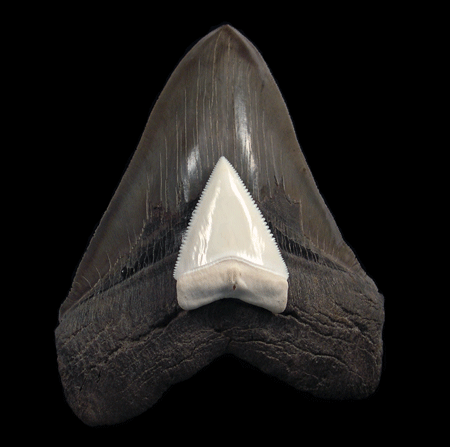
In the depths of Earth's ancient oceans, two apex predators reigned supreme: the Megalodon, a colossal shark of prehistoric proportions, and the Great White Shark, its modern-day descendant. Both creatures boast formidable teeth, but what sets their dental arsenal apart? Join us as we embark on a journey to compare the teeth of these legendary predators and unravel the evolutionary odyssey that shaped their formidable bite.
The Megalodon, with its monstrous size and formidable jaws, possessed teeth that dwarf those of its modern counterpart, the Great White Shark. Megalodon teeth, measuring up to 7 inches or more in length, are massive compared to the teeth of the Great White, which typically range from 1 to 3 inches. This size discrepancy reflects the differences in the sharks' overall dimensions, with the Megalodon being one of the largest predators to ever inhabit the oceans.
In addition to their size, the shape and structure of Megalodon teeth differ from those of the Great White Shark. Megalodon teeth are broad, robust, and adorned with large, serrated edges, ideal for grasping and crushing the bones of large prey such as whales and other marine mammals. In contrast, Great White Shark teeth are narrower, more pointed, and feature finely serrated edges, optimized for gripping and slicing through the flesh of smaller prey such as fish and seals.
The evolutionary differences between Megalodon and Great White Shark teeth reflect the distinct feeding behaviors and ecological roles of these apex predators. While the Megalodon was a top-tier predator capable of hunting and consuming large prey, the Great White Shark is a more versatile predator, feeding on a wide range of marine animals across different size classes.
Despite the evolutionary gulf that separates them, Megalodon and Great White Shark teeth share commonalities that underscore their shared ancestry. Both species belong to the order Lamniformes, a group of sharks characterized by their triangular teeth, serrated edges, and predatory prowess. These similarities serve as reminders of the ancient lineage that unites these formidable predators across millions of years of evolution.
In the realm of paleontology and marine biology, the teeth of Megalodon and the Great White Shark stand as enduring symbols of Earth's ancient past and the ongoing saga of evolution. Whether preserved in the fossil record or wielded by living predators, these teeth serve as testaments to the power and adaptability of nature's most fearsome hunters, inspiring awe and admiration for their timeless legacy in the world's oceans.










